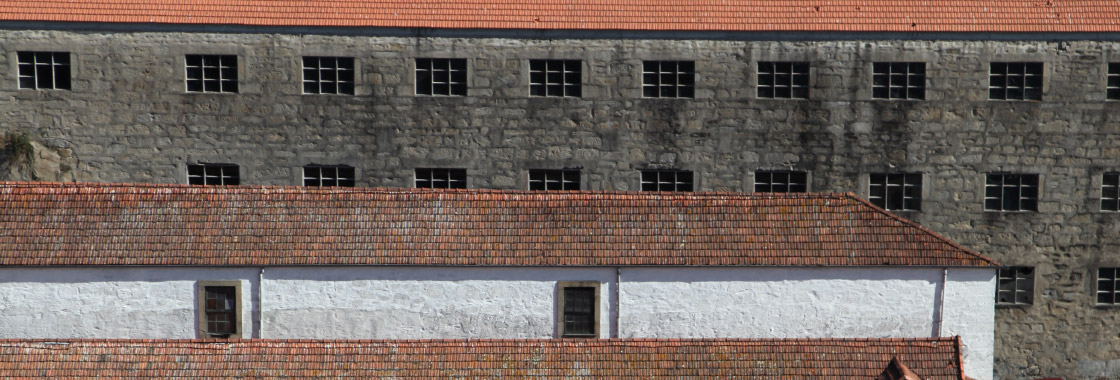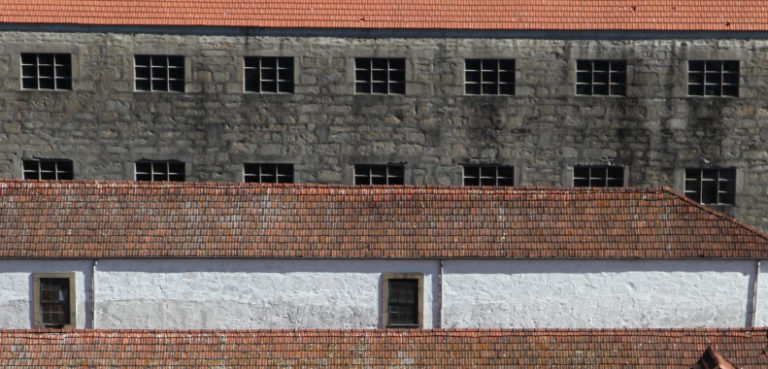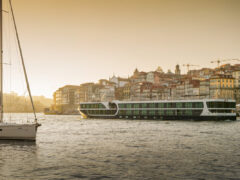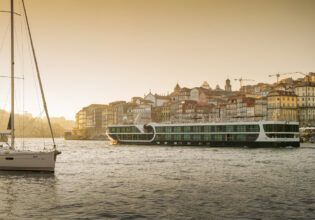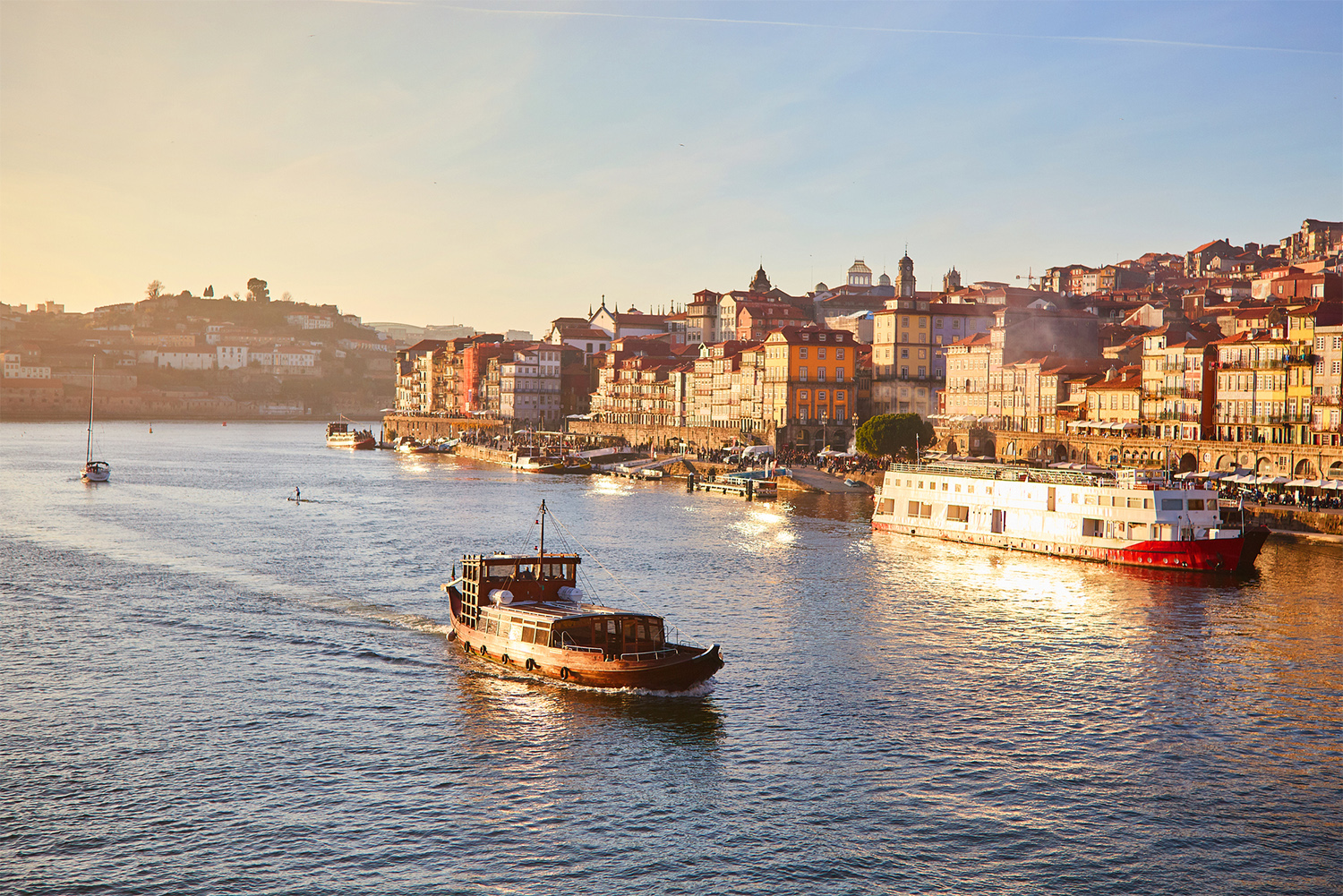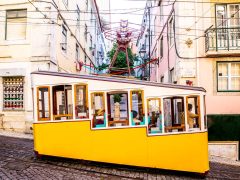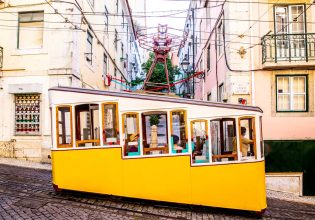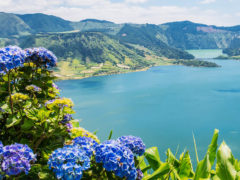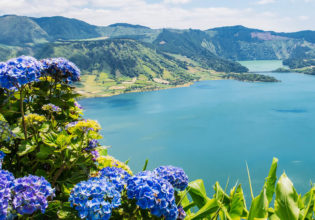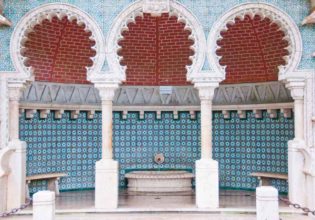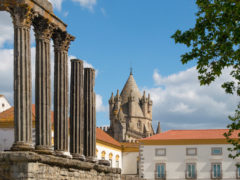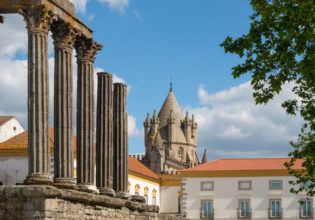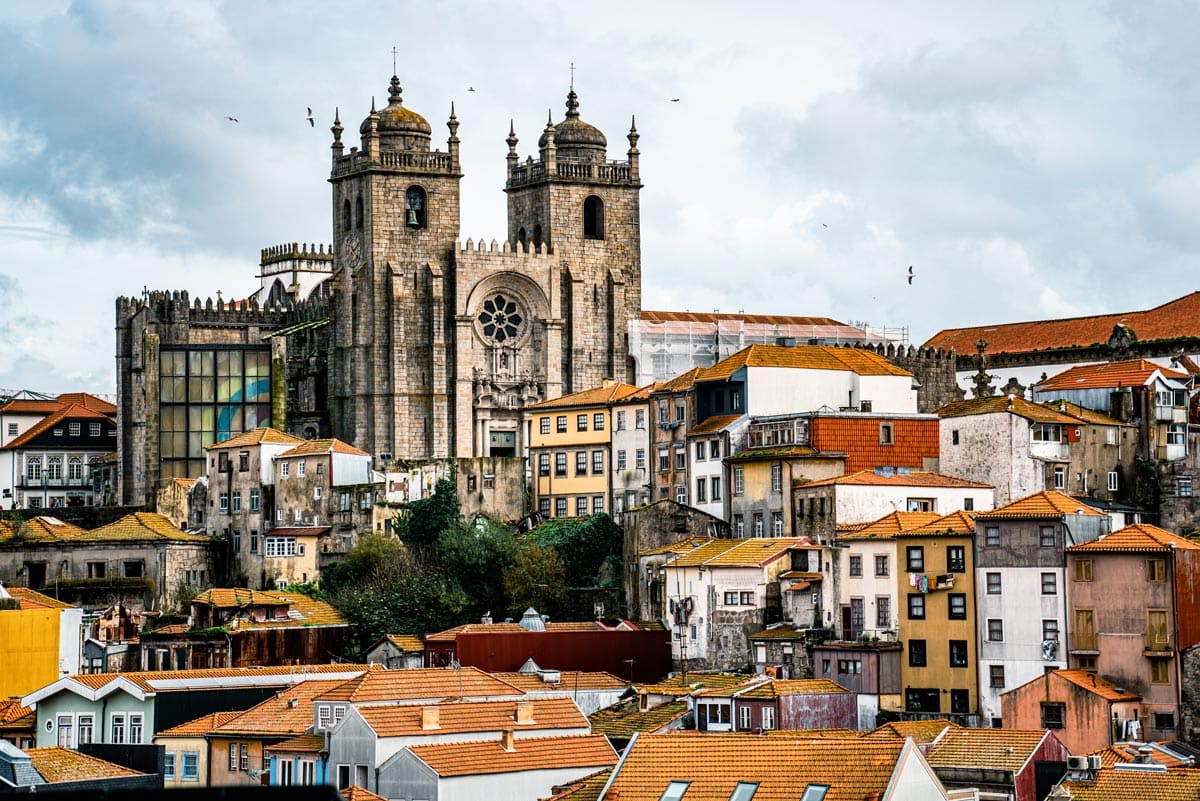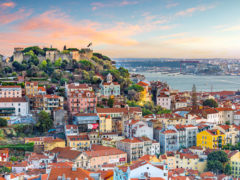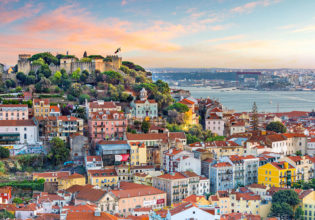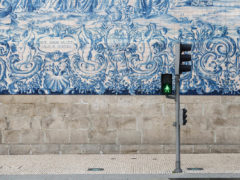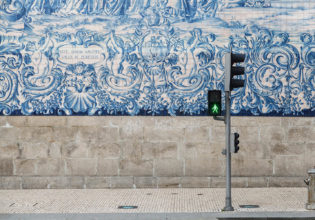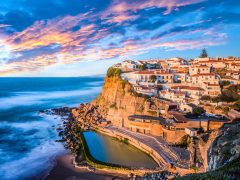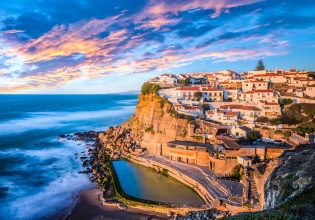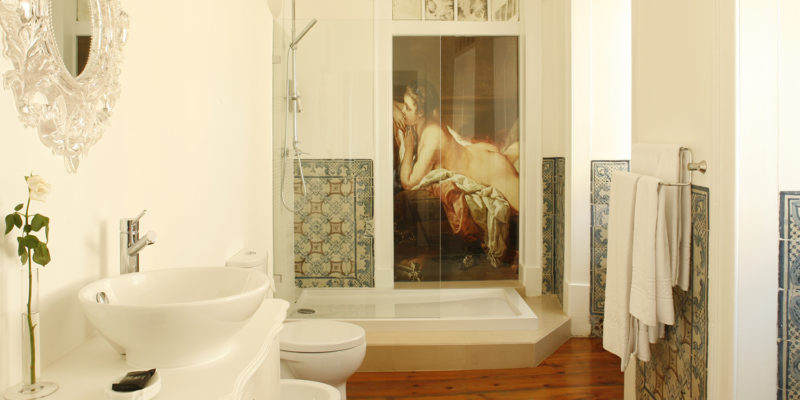The golden sand of the Algarve’s many beaches and crashing Atlantic surf, gooey custard tarts, sweet, spicy madeira and colourful houses covered in Azulejo tiles – Portugal’s glorious coastline, fabulous flavours and photogenic cities make it one of Europe’s hottest destinations. Welcome to our Portugal travel guide.
So where to start when planning your Portuguese adventure?
Here are our picks of the best things to see and do in Portugal.
Best Time to Visit Portugal
If you are keen to avoid crowds and higher prices, the best time to visit Portugal is in the shoulder season months of March to May or September to October.
European schools have their holidays in July and August, so the beaches tend to be extra busy at this time of year. However, there are lots of things to do in Portugal in July and August, including a host of music festivals.
February sees the almond blossom come into bloom and is a lovely time for hiking inland and curling up beside the fire in mountain villages, but it’s definitely not beach weather.
There are no direct flights to Portugal from Australia. You can fly from Sydney to Lisbon via Dubai and from Melbourne, Perth and Brisbane with two stops, often in Singapore and Germany, or Dubai and London.
Top Cities To Visit in Portugal
With its creaking tams and white-roofed cathedrals framing snatches of twinkling blue sea, Lisbon is deservedly the number one Portuguese city on most travellers’ lists. But there are plenty of others that warrant your attention too.
Porto is a vivacious city that appears to tumble down a hill to the banks of the River Douro. It’s an energetic hub of street art and rooftop bars contrasted with cobbled alleyway that lead to Baroque churches.
Although it’s more of a town than a city, Sintra is well worth a visit. In fact, Lord Byron described it as ‘Europe’s most delightful town’, probably because of its pleasure gardens and pastel-painted manors.
Equally charming is Alcobaça, in the country’s arid heart, which has a historic town centre built around a little river. It’s home to the Mosteiro de Santa Maria de Alcobaça without doubt one of the best things to see in Portugal.
Things To Do in Portugal
With so many glorious beaches and charming fishing villages on offer, it can be hard knowing what to do in Portugal.
Towns such as Lisbon, Madeira and Guimarães are characterised by their story-book buildings and twisting alleyways leading to sunny squares. Simply strolling around them is enough to delight any history or architecture lover.
Surf bums will be blown away by the sheer quantity of blue flag beaches in Portugal, while gourmands will adore visiting the many winemakers and farm shops in the Douro Valley, one of the most picturesque regions in the country.
Craft your ultimate holiday with our handy guide of things to see and do in Portugal.
Best of Portugal’s Beaches
Bathed in sunshine and boasting sand as fine as sugar, Portugal’s beaches are some of the most inviting in Europe.
Although it has a Mediterranean climate, its coast is actually lapped by the Atlantic Sea. If you’re looking for warmer water, stick to the Algarve’s 150 sandy beaches at the country’s south-eastern tip. Albufeira is a buzzing seaside resort that never goes out of style.
Some of the best beaches in Portugal are Praia de Cacela Velha, Praia da Falésia and Ilha de Tavira, a series of island beaches in a floating in turquoise lagoons in the Ria Formosa National Park.
To really get off the beaten track, head to The Azores, a string of semi-tropical volcanic islands, where you might spot dolphins and whales as you sunbathe.
Tours & Deals
Many of Portugal’s best tours revolve around the water: cruising the Douro River, hiking around the twin lakes of Sete Cidades (Seven Cities), the azure secret that twinkles at the heart of the São Miguel’s volcanoes, road tripping between its national marine parks…
A food tour led by a local chef is a fantastic way to lift the lid on Lisbon’s food culture, while a walking tour from Cascais to Sintra will reveal Moorish castles and tranquil villages surrounded by thick woodlands filled with the smell of eucalyptus.
Lots of tour companies near the border offer Spain and Portugal tours, so you can tick two of the greats off your bucket list in one easy adventure.
Must Do Festivals in Portugal
Portugal is a traditional place and most villages have their own (festa) or pilgrimage (romaria), many with eccentric traditions attached. Obidos has a chocolate festival every spring, while every four year Tomar’s cobbled streets are filled with girls wearing crowns of bread and flowers for the Festa dos Tabuleiro.
On Shrove Tuesday, the whole country dons colourful costumes and takes to the streets for a carnival which rivals Mardi Gras for sheer good vibes. Get out of the cities and into smaller towns such as Lamego for more traditional celebrations.
Every summer, a host of music festivals draw party-lovers from all over the world. Boom Festival, BPM Festival and Optimus Festival are a few of the most famous.
What to buy
There are plenty of traditional souvenirs you should stock up on in Portugal, such as handbags made from cork, traditional pottery and leather products.
Portuguese shoes are particularly famous, and many towns still have a shoemaker who crafts their products by hand. Colourful Barcelos cockerels are the unofficial symbol of the country, and as they are often made of wood are very light to pack.
If you’re looking for something a little more expensive, check out the new wave of sustainably-produced clothing brands that are coming out of Portugal at the moment. La Paz and Reality Studio are both super stylish and based in Porto.
Choosing Where To Stay
Portugal is an eco-conscious country and there are any number of chic hideaways that aim to minimise their impact on the environment. Areias de Saxo has a no paper policy and regularly volunteers staff to help clean local rivers, while Quinta da Bouça d’Arques recycles its water.
For historic drama a short drive from some of Portugal’s best beaches, try hilltop fort Quinta da Bouça d’Arques. If the sound or patchwork quilts and log fires in every room sounds like a bit of you, Areias do Seixo is sure to appeal, while Vila Vita Parc is one of the Algarve’s glossiest resorts and even has its own two-Michelin-starred restaurant.
Surfers and yogis with a sense of style should check out the Salty Pelican. On a lovely beach near Cascais, it is one of the best luxury hostels in the world.
Where to stay in Lisbon
The seven hills that stand guard around Lisbon have prevented it from becoming too sprawling and it is still a petite city that can easily be enjoyed on foot and tram. However each neighbourhood has a distinct personality.
There’s the Moorish district of Alfama, the oldest part of the city, and imposing Belém. Artistic Chiado and cultural Baixa. The Palacio Ramalhete is in the untouristy Janelas Verdes district and is a beautiful example of discreet Portugese luxury. Read the review here.
Teatro B&B is a boutique option with a very central location on the Bairro Alto, while sophisticated Almalusa Baixa is in an 18th century townhouse on one of the city’s prettiest squares.
What To Eat and Drink in Portugal
Portugal is producing more exciting young chefs than almost anywhere else in Europe at the moment, yet the country’s food scene remains deeply rooted in its past.
Petiscos is the Lisbon’s answer to tapas – bolinhos de bacalhau (salt cod croquettes) are an absolute must try. Pastel de nata (soft custard cradled in a flaky pastry case) is the city’s most famous export and was invented in local convents, while rice and shellfish dishes are also very typical.
In terms of drinks ginjinha, a fermented cherry liqueur, is Portugal’s tipple of choice, with old men gathering at the tasquinhas (hole in the wall bars) from mid-morning onwards.
Port produced in the Douro Valley, one of the country’s tastiest wine regions, is also delicious, as is the heady taste of Madeira, a fortified wine from the island of the same name.
